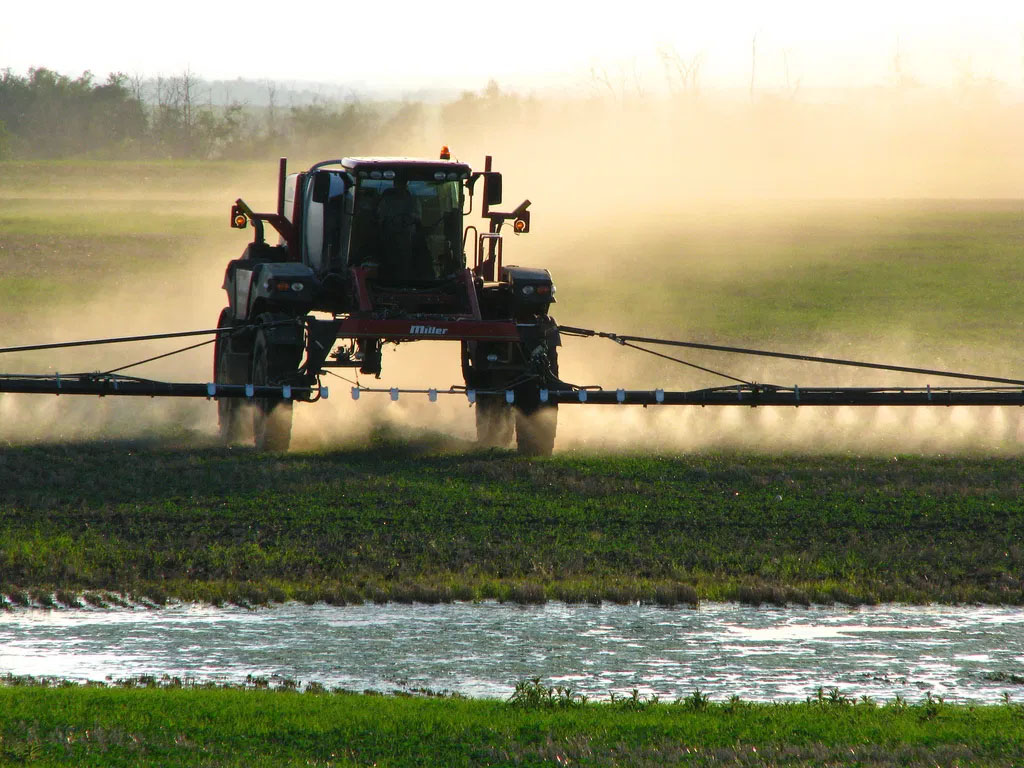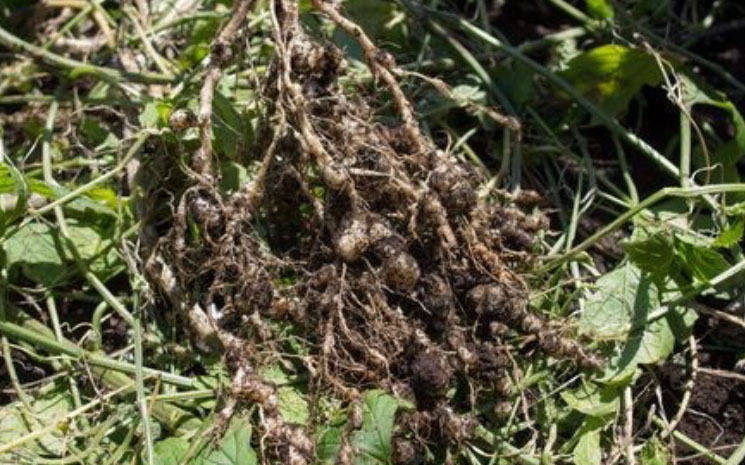

Agrochemicals are one of the key inputs in agriculture for crop protection and better yield. There is an increasing concern associated with the negative impacts on the environment and health caused by the large amount of agrochemicals applied to produce different crops worldwide. Decline in the soil fertility and growing demand from increasing population is forcing researchers to find new ways to increase crop yields. By combining environmental concerns with sustainable development, design of agrochemical delivery systems is essential to improve efficacy and efficiency of its use. Successful formulation and optimal delivery mechanism enhances the efficacy of the active ingredient.
Formulation delivery technology improves operator safety, reduces the dosage rate and wastage of the agrochemicals applied to the crops. Water based formulations, floating tablets/spreading formulations, microemulsion gel technologies in mixed formulations, controlled release through nanoencapsulation are few examples of agrochemical formulations enabling novel delivery mechanisms globally. In India, DBT has come out with draft guidelines to regulate the use of nanotechnology in the agriculture sector.
Nanoformulations based on stimuli response can be considered as a hotspot in agriculture nanotechnology which can maintain the stability of active ingredient and ensures targeted release. In recent years, utilization of nanotechnology to create novel formulations has shown great potential for diminishing the indiscriminate use of pesticides and providing environmentally safe alternatives. It can facilitate the controlled release of active ingredients (AIs), thus increasing the efficiency of products, while reducing the quantities required in field applications. Engineered nanocomposites (ENCs) have shown tremendous promise for need-based delivery of agrochemicals. Several polymer-based nanocomposites are also being used for the delivery of agrochemicals. Leading agrochemical companies like BASF, Bayer Crop Science and Syngenta have started productions of nanomaterial-based pesticides and herbicides. Agrochemical companies are either decreasing the size of existing chemical emulsion particles to the nanoscale or are encapsulating active ingredients within nanocapsules that open in response to heat, sunlight, or other stimuli. Nanoformulations improve delivery of AIs by about 20–30% in comparison to conventional applications. There are different types of nanoformulations that can be used for agrochemicals like nanoemulsions, nanoencapsulations, nanosuspensions and others. Emulsification is a highly effective and a simple technique to construct an agrochemical delivery system. Nanoemulsions not only ensure higher bioavailability of the lipophilic AIs encapsulated within but also possess high stability to particle aggregation and gravitational separation. Nanoencapsulation techniques enable greater control over the circumstances in which encapsulated pesticides will be released.
Although nanotechnology offers many advantages to the agriculture sector, there are few nanotechnology based products available in the market. This can be attributed to the factor that majority of studies are undertaken in Universities and research institutes or by small companies (start-ups) which more often are commercially unviable when it comes to scale up. Another factor associated with nanoformulations is understanding the environmental effects of these novel agrochemicals. More research is needed to determine the benefits and risks they confer. Parameters such as particle number concentration, particle size distribution and ratio of free and nanoparticle bound will be important in determining the pesticide bioavailability and toxicity of nanoformulations. It will be important to develop nanoformulations that offer low release features to ensure safe use of agrochemicals. R&D in nano-based agrochemicals is mainly led by large companies who hold many patents comprising a wide range of protocols for production and application of encapsulated formulations to produce nanoinsecticides. Promotion of collaborations across sectors will benefit in the development of potential nano-based products. In conclusion, use of smart delivery mechanisms for agrochemicals is an effective tool for sustainable agriculture.

The two recent ordinances related to Agriculture announced on 05 June 2020 highlighted the aims to provide a boost to rural India for farmers engaged in Agriculture and allied activities. Contract farming is an agreement between farmers and processing and/or marketing firms for the production and supply of agricultural products under forward agreements, frequently at predetermined prices. The second Ordinance draws on the model act of contract farming ‘The State /UT Agricultural Produce Contract Farming (Promotion and Facilitation) Act, 2018’ circulated by the Union Ministry of Agriculture. In India this is not a new concept and is governed up by the Model APMC Act, 2003, where Agricultural Produce Marketing Committees (APMCs) were given the responsibility to record the contracts. APMCs were also mandated to resolve the disputes in such contracts. However, market fee and other levies/ charges were payable to APMCs. As per the Dalwai Committee report published in 2017, only 14 states have notified the Rules to actualize the contract farming on the ground level and only Maharashtra, Haryana, Punjab, Karnataka, Gujarat, Madhya Pradesh and Chhattisgarh have registered companies/ firms for undertaking contract farming in their States. The reasons for this slow progress are conflict of interest perceived by APMCs, long procedures for registration and recording of agreement. The provisions of stockholding limit under Control Orders which deters buyers to enter into contracts to aggregate the contracted produce and poor publicity of contract farming among the farmers about its benefits are also the reasons that contract farming is not reaching scale.
The newly promulgated ordinance provides a national framework on farming agreements that protects and empowers farmers. The farmers can engage with agri -business firms, processors, wholesalers,States. The reasons for this slow progress are conflict of interest perceived by APMCs, long procedures for registration and recording of agreement. The provisions of stockholding limit under Control Orders which deters buyers to enter into contracts to aggregate the contracted produce and poor publicity of contract farming among the farmers about its benefits are also the reasons that contract farming is not reaching scale. The newly promulgated ordinance provides a national framework on farming agreements that protects and empowers farmers. The farmers can engage with agri -business firms, processors, wholesalers, exporters and large retailers for farm services and sale of future farming produce at a mutually agreed remunerative price framework in a fair and transparent manner for a minimum of one crop cycle in case of crops, or one production cycle, in case of livestock. The maximum period for such an arrangement will be five years. This provides legal basis to the existing contract farming practice and uniformity in contract farming across different states. This initiative is towards increasing the revenue of farmers by providing them with more options to market their produce and also to get into agreements on their own. Contract farming also beings other benefits for farmers like implementation of technologies like mechanization,use of drones, precision farming which becomes difficult in case of individual farmers. This also streamline the backward integration of the agro-based industries and agri-input companies through uniformity in the product quality and organized procurement of agri produce.
The Ordinance mandates for setting up of registration authority under state government to electronically register the contracts. The Ordinance has three main features related to Agreements:
- A farmer may enter into a written agreement which can specify terms and conditions of quality, grade, time of supply price and the extension services etc.
- The agreement can be for a period of 1 to 5 years.
- The price or any variation of the same has to be part of the agreement. For any additional amount over the agreed price, the prevailing price in APMC/ electronic portal etc. will be the benchmark.
In case of volatility, a minimum price has to be paid on top of which a premium also needs to be paid by the company. If the farmer is at fault, the buyer can recover the inputs contributed by him and the advance made by him and if the buyer fails to make payment on time, he may be liable to pay a penalty of 1.5 times the value The ordinance will govern the contract farming across the sectors including food processing industry, seed production, poultry etc. This is also aimed at helping the government’s crop diversification programme since farmers will be assured of sales and prices. Seed production is mainly through contract farming wherein seed companies provide foundation seeds to farmers who in return supplies certified seeds to companies. The National Seed Corporation has a well-defined protocol for contract farming for seed production. Mostly, the farmers receive a price higher than the MSP and even the prevailing APMC prices. In case ofhybrid seed production, generally the seed companies pay about 25% of agreed price at the time of delivery of seeds to farmers and remaining 75% is paid after conducting a genetic purity test which takes nearly 70-80 days. In the Ordinance, there is a change in these payment terms wherein companies have to pay 66% to farmers at the time of delivery and remaining 34% after certification. The entire price has to be paid within 30 days. Level of adoption of these new payment terms by the seed companies will be a challenge that will need to be monitored/discussed. Level of adoption of these new payment terms by the seed companies will be a challenge that needs to be discussed and debated before converting the Ordinance in to law in future. This Ordinance has the potential to change the future of contract farming by streamlining the current practices and expansion into other sectors as well.

Nematicides are the pesticides used to kill plant-parasitic nematodes which cause over 5% of the total crop loss globally exceeding 10 billion USD in losses annually. The global nematicide market is estimated to be USD 1.6 billion by 2025 growing at a CAGR of 3.4% from 2019 to 2025. Most of the nematicides in use globally are broad-spectrum toxicants with high volatility or other properties promoting migration through the soil. For example, Aldicarb from Bayer Crop Sciences was one of the most commonly used nematicides for potato cultivation. Aldicarb, a carbam ate pesticide, is a cholinesterase inhibitor preventing the breakdown of acetylcholine in the synapse. It can cause respiratory failure in case of severe poisoning. The product has been discontinued in most of the countries. Similarly, the persistent halocarbon DBCP (1,2-dibromo-3- chloropropane), a widely used nematicide before 1985, was banned from use when it was linked to male sterility and Dow Chemical company was found liable for more than $600 million in damages.
Same is expected to be the fate of most of old generation nematicides such as fumigants (Ethylene Dibromide, Methyl Bromide), carbamates (Carbofuran, Aldoxycarb, Oxamyl), and organophosphates (Ethoprop, Fenomiphos, Fosthiazate).
The increasing awareness about human health safety and environment is now driving the nematicides market and leading companies are shifting the product development focus towards biochemical and biological (microbe and/or plant based). Some of the most common natural products have been developed from garlic-derived polysulfide, neem cake, root exudate of marigold (Tagetes) and nematophagous fungi, Paecilomyces etc. Bayer’s Fluopyrum (a benzamide) based nematicides are proven safe for the workers and environment. The companies have either launched or developing products based on nematophagous fungi and bacteria that can act as a compliment or superior to chemical nematode management. Some examples are of biological nematicides are products based on (a) Bacillus firmus (VOTiVO™ and PONCHO®/ VOTiVO™) (b) Bacillus cereus (BioStart™ Defensor) (c) Paecilomyces lilacinus (multiple products); (c) Pseudomonas fluorescens (Sheathguard (or Sudozone)); (c) Pasteuria penetrans (Econem): and (d) Pochonia chlamydosporia etc.
The agrochemical companies are also developing biochemical based products with no phytotoxicity and are expected to change the product mix in the nematicide market for better. However, these products may be delayed to the market due to no clear regulatory pathway that currently follows the same regulations as chemical pesticides. Regulatory agencies are looking at such products on case-to-case basis and trying to incorporate the changes in policies as required to ensure that safe nematicides are brought into the market.
The agrochemical companies are also developing biochemical based products with no phytotoxicity and are expected to change the product mix in the nematicide market for better. However, these products may be delayed to the market due to no clear regulatory pathway that currently follows the same regulations as chemical pesticides. Regulatory agencies are looking at such products on case-to-case basis and trying to incorporate the changes in policies as required to ensure that safe nematicides are brought into the market.
Another critical aspect for success of safer products will be that they should be accepted by the end users. For this, the agrochemical and biological companies in the industry are focused on achieving satisfaction of such users through more research, especially on the biology, ecology, interaction with other agricultural inputs, and mode of action of these biochemical/biological products. Ultimately, the end users will need to be made aware and trained in optimal use of such products to achieve sustainable and environmentally friendly nematode management.
News
Better weather conditions – 13% increase in kharif sowings
Timely arrival and rapid spread of the monsoon along with good pre-monsoon showers accelerated Kharif sowings by 13%
Read More
Fresh Locust attacks in Rajasthan, 5 states at risk
Swarms of pink immature adult locusts have entered Rajasthan through Pakistan. As they are in their most active stage, controlling them with pesticides will only kill 50%. There is high risk of the swarms entering Madhya Pradesh, Uttar Pradesh, Punjab, Haryana and Gujarat.
Read More
Vehicle-mounted ULV sprayer for locust control
Under the Make in India initiative for locust control, DAC&FW has indigenously developed the prototype and successfully conducted trials.
Read more
Enhanced digitization benefitting agriculture
Digital platforms are enabling the seed companies to interact with farmers through online meetings and are constantly evolving in improving the interactions with the customers.
Read more
Permit to export banned pesticides
Agriculture ministry has announced that it will permit export of any of the 27 banned pesticides on case-to-case basis. At least 12 of the 27 banned pesticides are being widely used across the world.
Read more
Microsoft’s solution for agritech startups
Numerous agri startups are currently offering enterprise-ready solutions with umpteen scale up potential driven by market strategies, unlimited technical support, and new sale opportunities. Using Microsoft’s Azure FarmBeats, startups can develop Artificial Intelligence and Machine Learning based models.
Read more
3.13% rise in horticulture production estimates
The fruit and vegetable production is expected to reach 99.07 million tons and 191.77 million tons in 2019 – 20. The growth is driven by increased production of Banana, Apple, Citrus and Watermelon in fruits and Onion, Tomato, Okra, Peas, Potato in Vegetables.
Read more
Viruses as delivery vehicles to induce genetic mutations
Innovative method is being explored for delivering virus free seeds using RNA virus instead of Agrobacterium mediated gene editing CRISPR-Cas9 systems, where the transgene remains. As RNA virus does not integrate into the genome, it may be a game changing delivery vehicle.
Read more
Manufacturers exploring custom hiring of farm machinery
With bumper Rabi harvest and migrant workforce’s retreat has opened up huge demand for tractor hiring. Tractor manufacturers explore tractor rental options for farmers to improve operational efficiency and increase productivity using affordable farm machinery.
Read more
Bayer partners with ITC to facilitate agri input delivery
With COVID 19 disrupting physical connect with the farmers, this partnership will help in timely delivery of agri inputs as well as agri advisory under the same digital umbrella. This will be beneficial in creating value based agri eco-system for the farmers.
Read more
Crop rotation – an effective tool to fight against powdery scab
Powdery scabs in potatoes is difficult to manage due to its ability to adapt to varying environmental conditions. South African researchers have identified two ideal plant species, oat and soybean for potato crop rotation in a bid to reduce the parasites’ inoculum in the soil.
Read more
Selective DNA sequencing in plants
KeyGene accomplishes an eightfold enrichment of 800 regions of the melon genome, thus reducing the time and money required for investigating regions in the genome involved in important plant traits. This was achievable by combining Oxford Nanopore Technologies’ MinION sequencing device and the Read Until software.
Read more
Empowering farmers through detection of deficiencies and biotic threats
A new tool, “Threat ID” released by Pioneer empowers farmers to identify pests, diseases and deficiencies in 30 crops including corn, soybeans, wheat and sorghum using modelling technology. Threat ID is a result of collaboration between Corteva Agriscience and Plantix
Read more
16 technicals and 19 formulations registration approved
In the 417th CIBRC meeting, the Registration Committee approved 16 registrations of pesticide technical and 19 formulation products, including 6 herbicides, 6 insecticides/acaricides, 9 fungicides, 1 plant growth regulators and 13 Bio-products. 8 bio-products got the first 9(3b) extension of validity period of provisional certificate of registration for one year, 1 bio-product got the second 9(3b) extension, 4 bio-products got the third 9 (3b) extension.
Read more
Sathguru offers a whole spectrum of services for the Agri-input companies

Click here to Download the PDF version
Authors:





Connect with Authors at: E-mail agribusiness@sathguru.com
 Grow Beyond
Grow Beyond 

